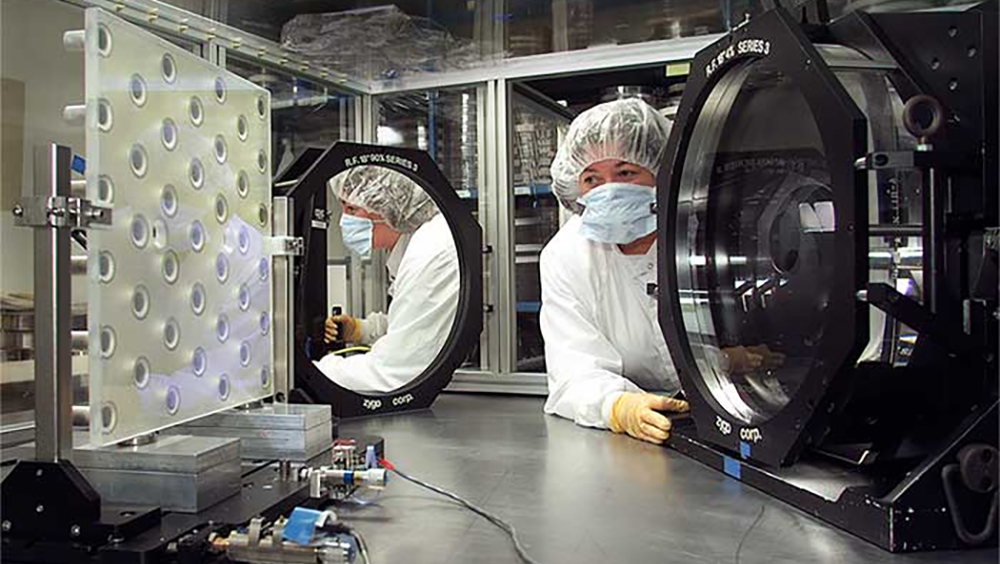Deformable Mirror

NIF’s Eyeglasses
The deformable mirror is an adaptive optic that uses an array of actuators to bend its surface to compensate for wavefront errors in the NIF laser beams. There is one deformable mirror for each of NIF’s 192 beams. Each mirror is located at the end of the main amplifier.
The computer-controlled mirrors serve as the eyeglasses of NIF. Thirty-nine actuators are attached to the back of the mirror. These mirrors push or pull the optical surface to correct optical distortion in the beam from residual thermal distortion, imperfect optical materials and surface flatness, and amplifier distortion due to flashlamp heating. By correcting each beam, a smaller spot size can be achieved, producing higher power density or better-controlled focal spots at the target. With the help of deformable mirrors, beams can reach the required spot size of about 100 microns or smaller. That’s less than the diameter of a human hair.
Adaptive Optics Improve Focus
Adaptive optics are used in some telescopes to “straighten” the wavefronts of light, thereby improving the image resolution and contrast. Deformable mirrors have improved astronomical imaging for land-based telescopes by a factor of 10 by compensating for atmospheric conditions.
In planning NIF, engineers knew that as the NIF beams made four passes through the amplifiers they would accumulate wavefront aberrations due to distortions in the amplifier glass and other optics. They needed to develop a way to compensate for these distortions to produce a well-controlled, focused beam. The answer lay in the deformable mirror.
Advances in adaptive optics in the Atomic Vapor Laser Isotope Separation program at Lawrence Livermore led to the first small-size deformable mirror performance demonstration on the Beamlet (NIF prototype beam line) in 1994. A full-aperture (40-centimeter square) deformable mirror was installed on the Beamlet in early 1997.
Next Up: Rapid-Growth Crystals



